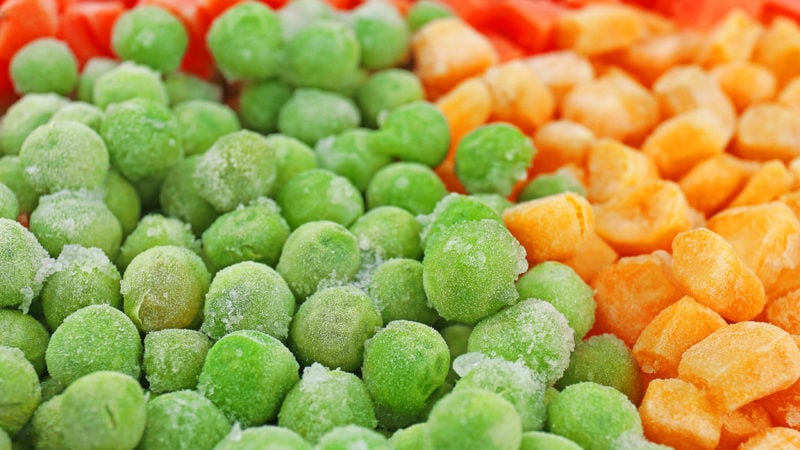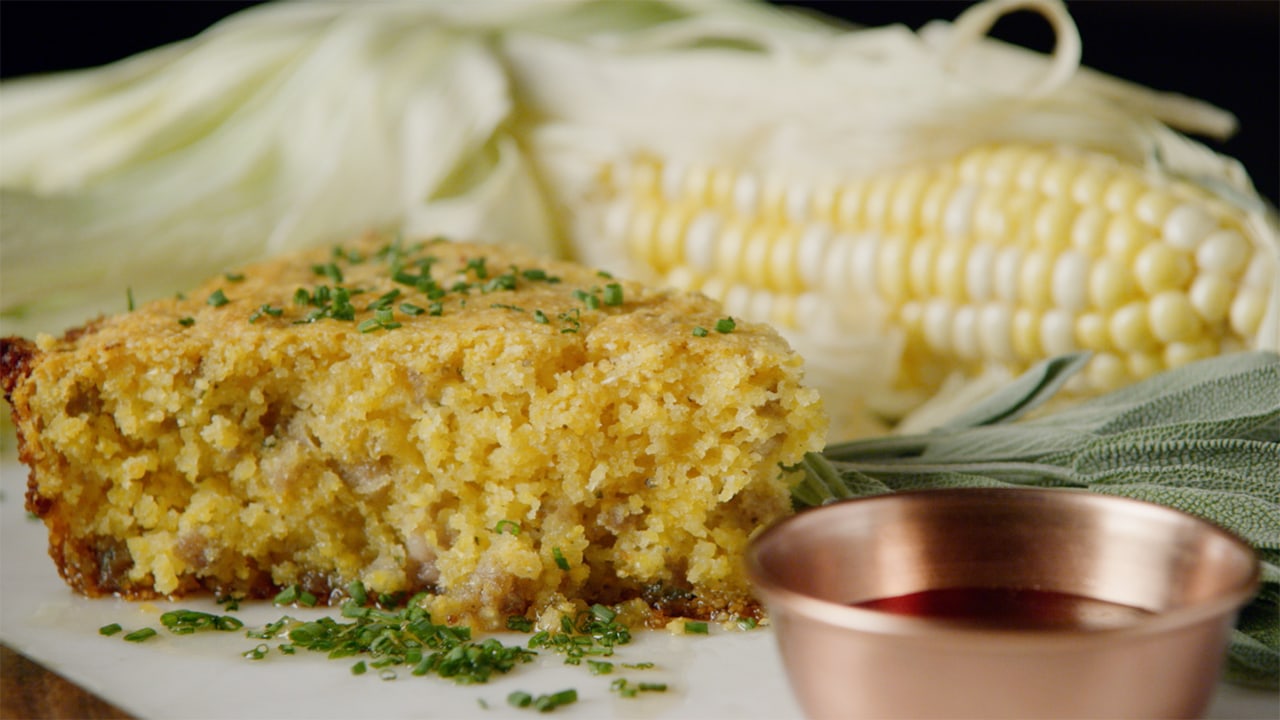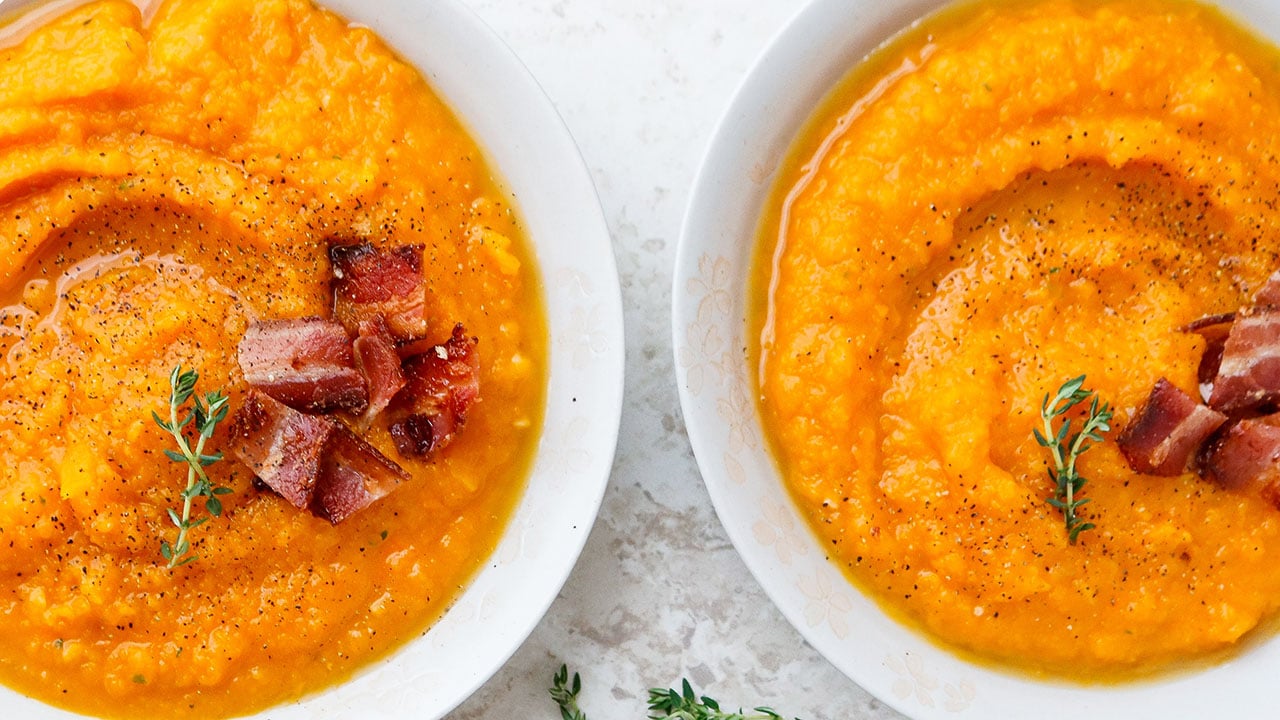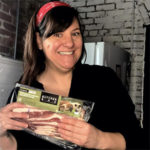Last Updated on July 6, 2021
For some, the idea of frozen vegetables brings to mind microwavable TV dinners or box-shaped blocks of mystery greens.
The myth that frozen vegetables are in some manner sub-par, is not close to today’s reality. Most frozen vegetables are “individually quick frozen” or IQF. During this process, vegetables are individually frozen in a blast freezer at their ripest and don’t lose nutrients as they did through other food-freezing technologies.
These days, you can get almost any vegetable frozen: Mushrooms, Brussel sprouts, asparagus, artichoke hearts, turnips, the list goes on and on. If you plan to do a lot of cooking at home, it is always good to have some key frozen vegetables on hand. A bag of frozen kale or peas can be a lifesaver as a quick side to your meal or the perfect final flavor-filled detail when making soups.
What to Know About Frozen Veggies
Not all frozen vegetables cook or defrost the same. Some vegetables tend to create excess water—like onions and peppers— and, in my experience, can result in a slimy texture in terms of their mouth-feel. Unless I am in a bind or a specific recipe calls for the frozen versions of these veggies, I avoid using them. However, the end result of cooking the higher in water veggies is what I have personally experienced and it may not be the case for you
Picking which frozen vegetables to use all boils down to your own preferences. But some of my personal favorites are:
- Frozen broccoli
- Frozen kale
- Frozen spinach (which can also have higher water content)
- Frozen corn
- Frozen peas
- and frozen shredded potato
How to Use Different Frozen Vegetables
Corn
Frozen corn is great for roasting right from frozen or simply sautéed with butter—which is a kid favorite. Frozen corn can also be used for making a corn and bean salsa or any soups or chowder that would benefit from corn. Another great way to use frozen corn that most people don’t know about is adding it to cornbread batter for a more authentic cornbread experience.
Broccoli
Frozen broccoli can be leveraged in an amazingly wide array of ways. I like to add it to scrambled eggs or frittatas, but it can also be used in some great side dishes. Try to steam and then mash frozen broccoli with parmesan cheese and a little milk—move over cauliflower mash there’s a new mash in town.
Spinach and Kale
The key to using the frozen version of both of these nutrient-filled greens is to squeeze out all the water after the greens fully thaw. You can use a cheesecloth—if you have one—or kitchen towel will do the trick to squeeze out all of the water.
Some other uses for both spinach and kale are to add them to your marinara or even to chop them up and add to your meatball mix. The latter is a great way to get some healthy greens into the kids’ diet. Just tell them it’s “a little bit of love.” And don’t forget, both frozen spinach and kale serve as a great base for a breakfast smoothie.
Rice
I know, I know, rice is not a vegetable, but frozen brown rice is so much easier to make. For me, the added convenience—and time savings—makes the frozen version taste better than the standard dry form.
Butternut Squash
Frozen squash is great for making pureed butternut soup or any soup that features the hearty vegetable. Also, make your mashed butternut squash or roasted butternut squash for the holidays that much easier by cooking it from frozen.
Peas
Peas are great to add to pasta and rice dishes, like many spaghetti and pancetta dishes. It is great for a spring vegetable dish; just puree frozen peas with mint and parmesan cheese. Almost any soup or stew will benefit from the addition of peas. Since they are on the sweet side, frozen peas are a great veggie for kids.
Emilie Abijanac is a graduate of New England Culinary Institute with over 20 years of catering experience in Boston. Emilie was the Sous Chef for East Meets West Catering and has worked with Kate’s Table and La Fête. Emilie was also the culinary director of ButcherBox.





